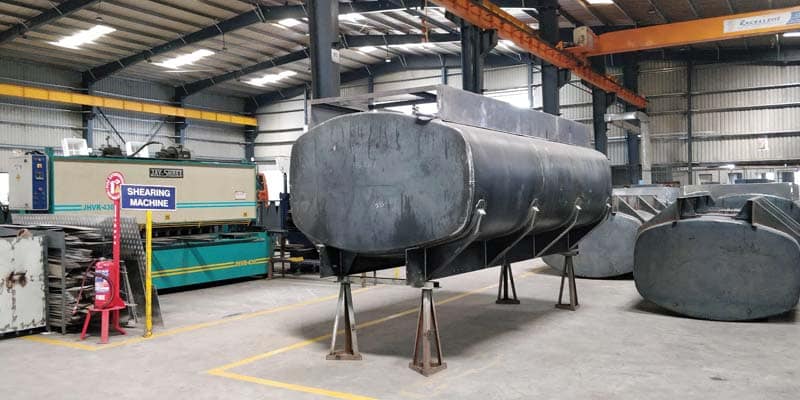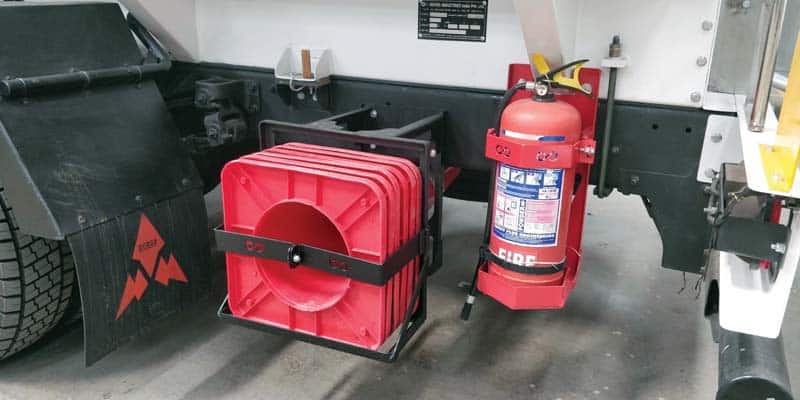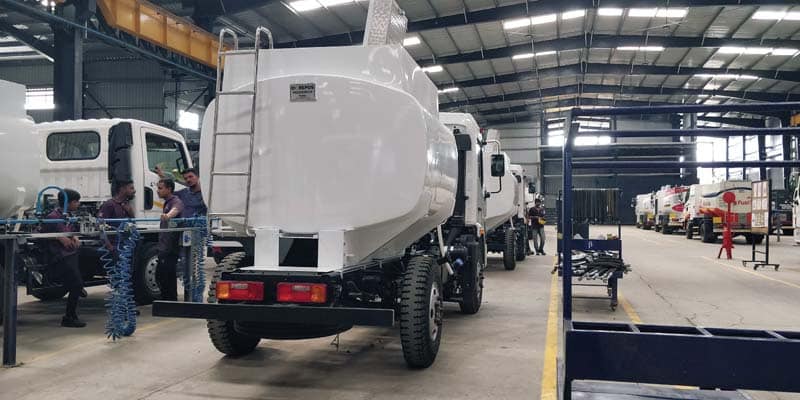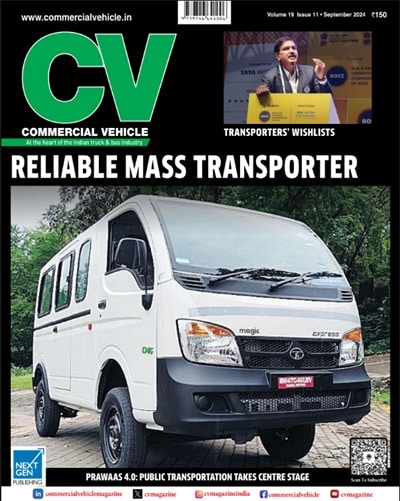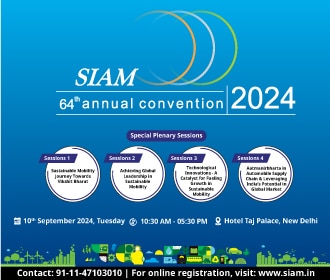The High Speed Diesel (HSD) and Doorstep Diesel Delivery (DDD) models continue to evolve. Prateek Pardeshi looks at the Repos Energy India facility as a core building block.
In 2020, Public Sector Oil Marketing Companies (OMC) like Indian Oil Corporation Ltd. (IOCL), Hindustan Petroleum Corporation Ltd. (HPCL), and Bharat Petroleum Corporation Ltd. (BPCL) got together and conveyed that they were not into offering home delivery of petrol and CNG to customers. Neither did they offer Doorstep Diesel Delivery (DDD). Here, the delivery to individual vehicles like two-wheelers, three-wheelers, four-wheelers and commercial vehicles was not permitted either. DDD was however permitted for stationary equipment, machinery and heavy vehicles. They could be at specific customer sites, dedicated industrial zones, mines, construction sites and or suited to agricultural machinery etc. The point was that these vehicles could not make their way to the fuelling station and thus it presented an opportunity. With only PESCO-licensed mobile dispensers allowed to carry out the High Speed Diesel (HSD) reselling, between the period July 01, 2019, and August 31, 2020, as per a Ministry of Petroleum and Natural Gas statistic, an estimated 78 TKL of HSD was delivered.
Repos Energy India Pvt. Ltd., an early mover, leveraged this. The startup founded in 2017, company set out to marry IoT and its state-of-the-art fuel bowsers built on locally procured Original Equipment Manufacturer (OEM) chassis. The journey that began with the first order completion project of three Repos Mobile Petrol Pumps (RMPP) for Tata Motors has today the company building on multiple chassis in different configurations. Chetan Walunj, Co-Founder, of Repos Energy said, “While the entire world is moving towards making things easily accessible by going mobile, the DDD in India has eased the way fuel was being delivered in the country. We want to reach each and every corner of India and revolutionise the distribution of all kinds of energy in future.” To build upon this vision, the company, in 2022 also tied up with Mahindra & Mahindra Ltd. under which it signed on to build fuel bowsers on ICV platforms like the Furio 7.
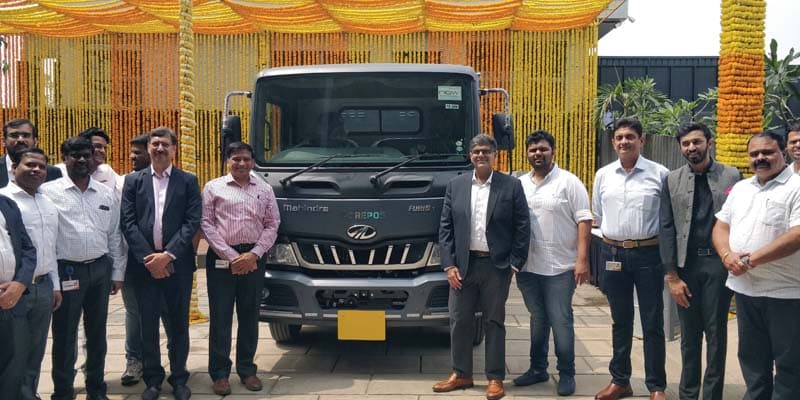 In a press conference, Walunj informed of the company producing three variants of the RMPP: 3000 series on the Furio 7 platform, 4000 and 6000 series on the Furio 11. Back then (mid-2022), the base variant was priced at Rs.20 lakh going up to Rs.26 lakh for the higher variants. As per its M&M MoU, the company was to supply 50 trucks up till March 2022. The company informed Walunj then, had a cumulative order book of 3000 units (March 2022). Halfway through 2022, it is claimed to have sold up to 1500 vehicles. The order pipeline included an order of 100 trucks on Tata platforms like the Ultra. The fuel bowser unit USPs includes features like double dispensing units, a Power Take-Off (PTO) unit, smart fuel level sensors, a brake interlock mechanism, remote throttle, intelligent geo-fencing, and easy-to-use Repos App, claimed by Aditi Bhosale Walunj, Co-founder at the company. Repos was recently also named the ‘National Startup’ in the IoT sub sector. Metering fuel apart from petrol pump dispensers was never possible, as many fleet operators experienced fuel cost discrepancies.
In a press conference, Walunj informed of the company producing three variants of the RMPP: 3000 series on the Furio 7 platform, 4000 and 6000 series on the Furio 11. Back then (mid-2022), the base variant was priced at Rs.20 lakh going up to Rs.26 lakh for the higher variants. As per its M&M MoU, the company was to supply 50 trucks up till March 2022. The company informed Walunj then, had a cumulative order book of 3000 units (March 2022). Halfway through 2022, it is claimed to have sold up to 1500 vehicles. The order pipeline included an order of 100 trucks on Tata platforms like the Ultra. The fuel bowser unit USPs includes features like double dispensing units, a Power Take-Off (PTO) unit, smart fuel level sensors, a brake interlock mechanism, remote throttle, intelligent geo-fencing, and easy-to-use Repos App, claimed by Aditi Bhosale Walunj, Co-founder at the company. Repos was recently also named the ‘National Startup’ in the IoT sub sector. Metering fuel apart from petrol pump dispensers was never possible, as many fleet operators experienced fuel cost discrepancies.
Special application vehicles
During our visit to the Chakan facility, work was underway on multiple fuel bowser configurations. The facility is divided into three sections: Alpha, Beta, and Gamma. At Alpha, the bodywork takes place. It is here that the inlets and outlets for the designated fuel including the tanks fabricated and made installation ready. The special purpose vehicle is also equipped with safety cones, and fire extinguishers etc owing to the nature of application. A ladder facilitates quick inspection too. The tanks are fabricated and mounted by Repos, and quality checks are performed near the welds. The testing happens in three areas of leaks, calibration and final rollout. Crash bars are installed. These are rolled into the Beta section, to carry out the installation of major aggregates such as the fuel tank, fuel pump, and fuel hoses. In the Gamma section, the fuel dispensing trial is undertaken. It is crucial for IoT controller integration, programming and automation ahead of the pre-dispatch inspection being carried out.
Given its capabilities of embedded software, the company hopes to stand out from the competition. This competition stems primarily from local fabricators and bodybuilders and new entrants like Fuel Buddy. Opined Walunj that its biggest distinguishing factor is its embedded software capabilities in addition to the bodybuilding prowess that assures a fit and finish desired by the market. Until now Repos has worked on building these special application vehicles on various Class-B truck chassis sourced from multiple OEMs including from Ashok Leyland, VE Commercial Vehicles, BharatBenz, and SML Isuzu.
Track and trace
For fleet operators, the fuel accounts for the highest outflow in their cost of operations. Apart from fuel, there are no factors that are controllable. In the case of fuel, the biggest vulnerability is pilferage and adulteration. Repos customers can internally track these metric using the Repose Petroleum Datum (RPD). The company leverages three apps: Repos Energy, Repos Owner and Repos Petrol pump. Claimed to have developed these in-house, the company requires this Datum (to hold bulk fuel) to be supported with prerequisite infrastructure at the recipient’s end. This entails building a concrete cement base preferably, and a roof to avoid direct sunlight. At an estimated rupees four-five lakh, the company has been able to get the project off ground with units sold in east India as well as Maharashtra. As of February 2022, Repos has sold around 78 units. VRL logistics is a customer.
This is a third-generation Datum, started in 2017. The idea of launching mobile petroleum trucks started from the Datum itself. The production of Datum was later halted to start working on the fuel bowsers. At Prawaas last year, the company also showcased the ‘credit system’ through the Repos platform. With critics voicing their dissent over the entire petroleum business being deprived of data and clarity on consumption, the Repos Datum was deemed a step in the direction of introducing transparency. It can give out crucial metric like fuel consumption patterns, and asset-wise consumption for example.
Strategic partnerships
The company with its business model has ensured quicker TATs and faster deployment of vehicles on-road. Previously, the buyer of a fuel bowser would procure a chassis of his or her preferred OEM from an authorised dealer. The chassis would make way to the Repos facility entailing a 15-20 day period and another 30 days for the special application vehicle to be built. It entailed another 45 days for the vehicle to be delivered making it a ~ three months (95 days) cycle. It was found to lead to tangible losses like customer finances (costlier conversion compared to a fully-built fuel bowser) For customers such as BPCL, and IOCL, today, Repos is claimed to take only three-four days to apply livery, and the vehicles can be dispatched. The government is also working on a few smaller capacity fuel browsers such as 1000-2000 litre which seem to be in great demand. At Repos, the focus is on quantity, distance and time which the algorithm takes charge of and the company charges a convenience fee for this. For lower quantities, the convenience fees are inversely proportional making them higher. The Ratan Tata backed, bootstrap company is hoping the fresh infusion of funds could be diverted to product expansion and for alternative gas businesses led by its R&D. Earlier in May 2022, Ratan Tata, Chairman Emeritus of Tata Sons, led a pre-series A round of funding for Repos Energy, which was followed by undisclosed investors. The newly raised funds amount to ~ Rs.560 million and are a mix of both equity and debt. The company assures a ~ 20 per cent of gross margin, revenue sharing model and a breakeven point of 10-12 months.
Future RMPP
After tasting success with DDD, Repos has set its sight on products dependent on mobile EV charging stations. It hopes to apply the business model to free up charging real estate with similar mobile units. The largest consumer of diesel today is the B2B segment, which consumes about 70-75 per cent of the fuel and they will eventually move, opined Walunj. Repos is also known to be working on CNG and battery swapping based solutions, which might roll out at the start of FY2023 (planned for the end of FY22). For EV, Repos has already signed MoU with Urja Biosystem Pvt. Ltd. for mobile distribution of clean EV power through second-life batteries. The official rollout is yet to take place. For CNG, the company has factored in major aggregates for mobile dispensing that include the gaskets, compressor and the dispenser itself.
Energy Distribution Trends
In an industry talk session, Chetan Walunj, Co-Founder of Repos Energy Pvt. Ltd., shared key insights on the energy distribution trends with Prateek Pardeshi.
Q. What would be the average life span of a fuel bowser?
A. The average life span would be around 10 years for these special-purpose vehicles. After their life, refurbishment is also possible.
Q. What major challenges could new entrants encounter? Are there high entrant barriers to the business?
A. It’s not higher, but I would say it is structured. The new entrant has to be registered with the Department for Promotion of Industry and Internal Trade (DPIIT). Once he or she is registered they have to file a tender with any of the OEMs and then he or she can start the business.
Q. What is the next big development in dispensing technology?
A. In the dispensing technology, it will be all AI-ML driven. We went to a fuelling station and asked for a fill of 100-200 litres of fuel. In the days to come, the dispenser will identify your vehicle and based on predictive data calculate the amount of fuel required for the fill with the amount required to be tendered.
Q. What happens if the fuel browser itself runs out of fuel?
A. No, it cannot use that same fuel.
Q. How have you reduced pilferage and tampering in general?
A. The tampering case encountered previously was because the barrel level was based on a calculation methodology. Our system has a metering unit and a leveller, hence the inlet and outlet are controlled, and that’s the reason there is no scope for such instances.
Q. How is Repos dealing with dead stock? How has government intervention on the subject matter helped?
A. For dead stock we have an Automatic Tank Gauge (ATG), the fuel tank can be completely emptied using patented technology. A fuel entrepreneur has to invest in infrastructure. However, in the business of selling fuel, to buy it from any of the OMCs there is no investment required and at the same time, they stand to benefit from the additional safety layer in the form of the fuel entrepreneur. When an OMC invests in a petrol pump they have to invest at least 70-80 per cent of capital up front and 20 per cent is from the dealer. So without investment, they have opened up a revenue channel.
Q. Will the drive for mobile charging units at Repos be fuelled by cleaner alternatives?
A. For future aspects, the vehicles will be greener like the CNG platforms over the near- to medium-term horizon.
Also read, PMI Electro appoints Aanchal Jain as the CEO





